Celebrating the Chattooga’s 50th Anniversary as a Wild and Scenic River
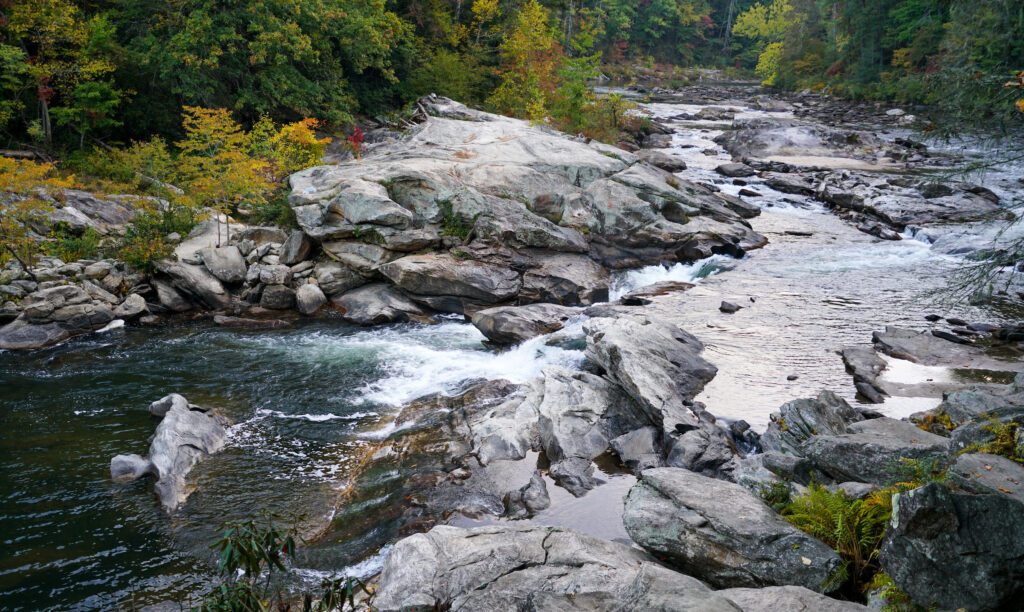
The Chattooga River has acquired a number of distinctions and nicknames over the years, including the honor of being considered by many as “The Crown Jewel of the Southeast.” In South Carolina, the Chattooga is considered one of the state’s “Seven Natural Wonders” and is featured prominently during the annual SC-7 Expedition. It begins as small streams, high on the slopes of the Appalachian Mountains near Whiteside Mountain in North Carolina. Nurtured by other streams and abundant rainfall, it travels 50 miles until it ends at Lake Tugaloo between South Carolina and Georgia.
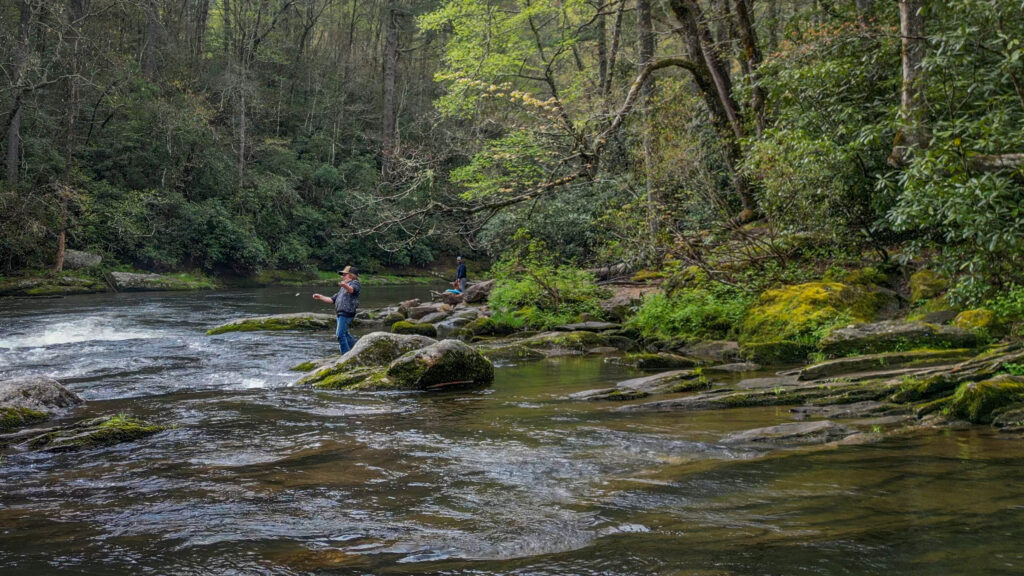
To say the Chattooga River is a popular destination would be quite the understatement. On any given day, the Chattooga is abuzz with activity as people seek to enjoy the river through whitewater rafting and kayaking, flyfishing, and swimming, as well as hiking and camping in the forests that surround the river. You can sense the energy in the atmosphere when you are standing along the Chattooga, whether it is the palpable excitement exuding from thrill seekers as they prepare to launch their boats into the turbulent waters; the serene silence as a solitary angler casts a line into the river; the carefree feeling as a family splashes around along the river’s edge; or the contemplative wonder as folks take in the beauty of one of the many waterfalls along the river corridor. With all this activity, it can be difficult to imagine how not so long ago the Chattooga was practically unknown to the outside world.
Centuries before European settlement of the area, the Cherokee and other tribes living along the Chattooga served as stewards of the river and its vital natural resources. The canebrakes along the river, the supply of fish and other aquatic resources, and the abundant forest resources played important roles in the cultural life of those who called this area home. A small Cherokee settlement called Chattooga Town was located along a well-used trading path and adjacent to an important river crossing that connected Cherokee communities on both sides of the Chattooga River. Even after European settlement, the rugged landscape of the area helped keep local communities small and isolated even well into the 20th century and the local knowledge of the river was not as readily available to those who lived outside the region. That all began to change as word of the Chattooga River started to spread beyond these local communities.
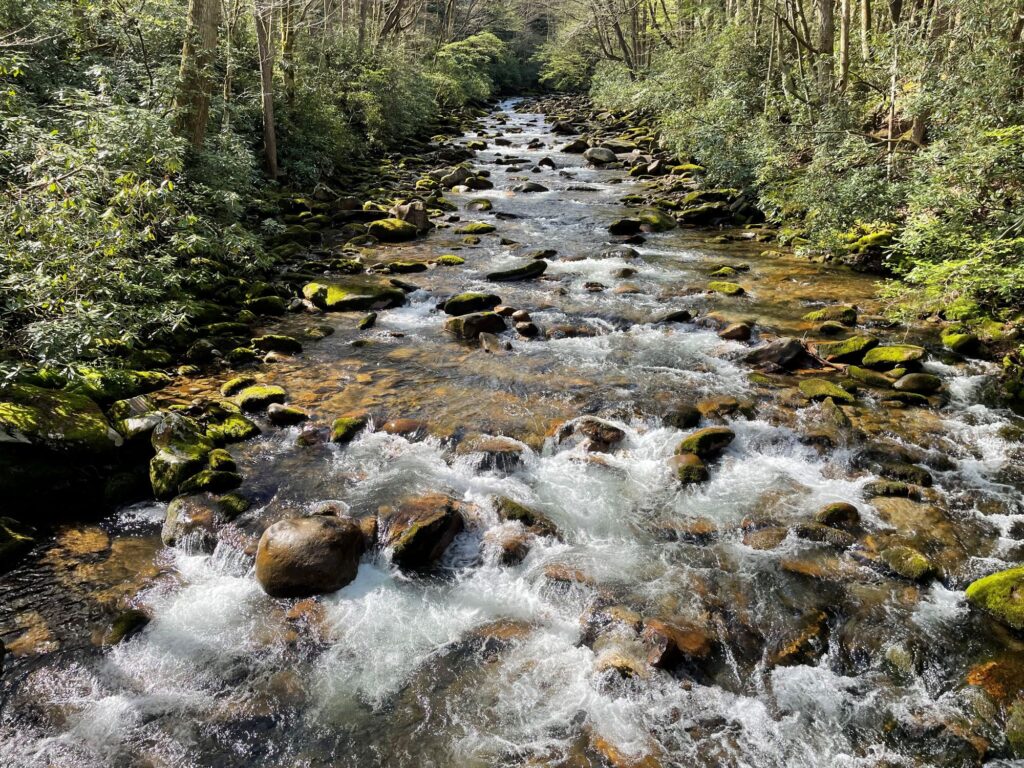
Let's stay in touch!
We’re hard at work in the Southeast for rivers and clean water. Sign up to get the most important news affecting your water and rivers delivered right to your inbox.
Although the Chattooga caught the attention of theater goers who watched the movie Deliverance in 1972, which prominently featured the river, by that point the Chattooga was already starting to see a rise in awareness within certain circles, especially among environmentalists and outdoor recreationalists. In fact, when Congress passed the Wild and Scenic Rivers Act of 1968 the Chattooga was specifically identified as one of 27 rivers across the country to be studied for possible future inclusion in the new National Wild and Scenic River System. Following the study, it was concluded that the Chattooga was indeed eligible and on May 10, 1974, the Chattooga River became the first river in the Southeast designated as a Wild and Scenic River (WSR).
So what is Wild and Scenic River designation and why does it matter? The National Wild and Scenic Rivers System was created to preserve certain rivers with outstanding natural, cultural, and recreational values in a free-flowing condition for the enjoyment of present and future generations. When a river is added to the National System, it is given a classification—wild, scenic, or recreational, which are measures of the level of development along the river at the time of designation (the Chattooga WSR has sections of the river representing all three classifications). Additionally, the Chattooga WSR is managed to preserve the following “Outstanding Remarkable Values:” ecology, geology, history, recreation, and scenery (for more details visit this website.) Commenting on the importance of WSR designation for the Chattooga, CEO of the outfitter Wildwater, Jack Wise states that “The Chattooga River would be a very different place today without the direct actions of a few pioneers. Today’s beauty and other special qualities of the Chattooga National Wild and Scenic River are due to the foresight of a coalition of river runners, state, and national legislators with the help of the US Forest Service.”
Some of the influential individuals and organizations during this early effort included Claude Terry, co-founder of American Rivers (and consultant and stunt double for John Voight in Deliverance), who convinced Jimmy Carter, governor of Georgia at the time, to join him in running the infamous Bull Sluice rapid in a tandem canoe. Carter grew up in awe of nature’s wonder. But it wasn’t until he first paddled the Chattooga River that he understood the power and majesty of a wild, free-flowing stream. The Wild President, a film produced by American Rivers and NRS in 2017, tells the story of Carter’s soul-stirring journey with Claude Terry on the Chattooga, and how the experience motivated him to push for legislation that would protect 57 miles of the Chattooga River as a Wild and Scenic River, preventing any damming or other activities that threaten the rivers’ values. “Once you get to know an area, it becomes part of you, and you can’t help but want to protect it” said Carter.
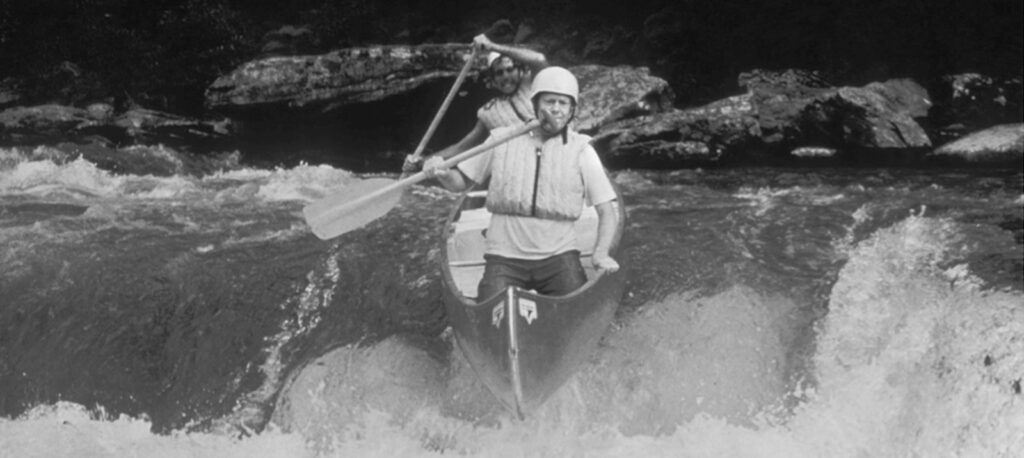
The Wild President
President Jimmy Carter grew up in awe of nature’s wonder. But it wasn’t until he first paddled the Chattooga River that he understood the power and majesty of a wild, free-flowing river. The Wild President tells the story of Carter’s pioneering tandem-canoe descent of Bull Sluice Rapid and how the experience transformed his life and politics. In 1974, Carter successfully pushed to designate 57 miles of the Chattooga as Wild & Scenic, permanently protecting it from development and dams.
Today, the Chattooga Wild and Scenic River Corridor is co-managed by the three national forests that straddle the tristate border: Chattahoochee National Forest in Georgia; Nantahala National Forest in North Carolina; and Sumter National Forest in South Carolina, which serves as the lead forest for the Chattooga WSR. As with anything of this scale and complexity, managing the Chattooga WSR involves near constant collaboration and engagement with local communities, stakeholders, and leaders in all three states. The rivers’ WSR designation and management ensures that the river remains clean, natural and free flowing. In fact, the Chattooga is one of the last remaining free flowing or un-dammed rivers in the Southeast.
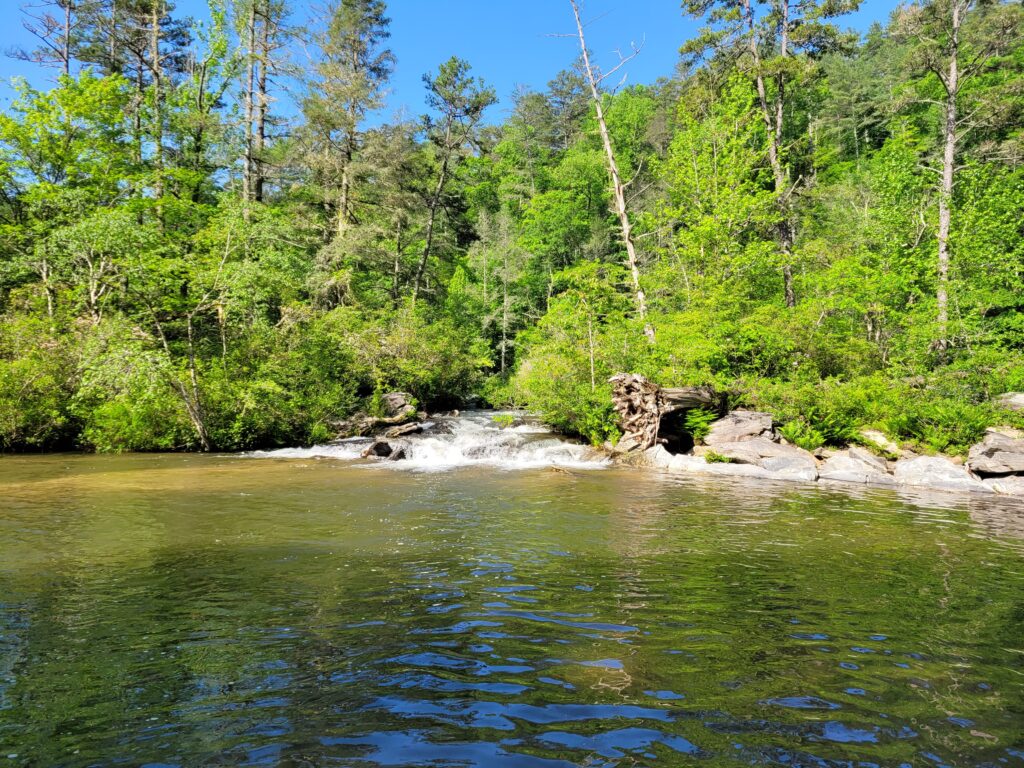
Speaking of collaboration and engagement, throughout 2024 the Forest Service and community partners will be celebrating the 50th anniversary of the Chattooga’s Wild and Scenic River designation, with a specific emphasis on river stewardship. They will take the time in 2024 to reflect on the successes and the challenges of the past 50 years since the Chattooga’s WSR designation. Secondly, throughout the year they will also reengage with local communities in river stewardship through hands-on service events and projects, such as river cleanups. As they do this, the Forest Service and partners want to be intentional in connecting with underserved communities to ensure everyone has the opportunity to access and steward the Chattooga River. Finally, although 2024 is a time to celebrate an important milestone, the three forests plan to also focus on developing future stewards of the Chattooga.
District Ranger, Robbie Sitzlar from the Andrew Pickens Ranger District (Sumter National Forest) shares, “As much as we want to take the time to celebrate where we’ve been and where we are today, we know that it is critical that we continue to develop the next generation of river stewards through engaging children and families. Because, at the end of the day, each one of us has a role to play in the health of the Chattooga and with ensuring that future generations can enjoy the unique beauty and recreational experiences that the Chattooga Wild and Scenic River Corridor offers.” Throughout 2024, YOU are invited to join us in celebrating the Chattooga River and what it means to South Carolina, North Carolina, Georgia and the nation. Come and enjoy all that the Chattooga WSR has to offer, while remembering that it is up to each one of us to do our part in ensuring this important resource can be enjoyed for generations to come.
To learn more about the many recreational opportunities that the Chattooga Wild and Scenic River offers and how you can get engaged with stewarding this important river, check out the Forest Service Interactive Visitor Map and visit the national forests’ websites:
- Sumter National Forest, South Carolina: www.fs.usda.gov/scnfs
- Chattahoochee National Forest, Georgia: www.fs.usda.gov/conf
- Nantahala National Forest, North Carolina: www.fs.usda.gov/nfsnc
To learn more about the National Wild and Scenic River System, visit: www.rivers.gov
Greg Cunningham worked for the National Park Service for 15 years at national parks in Virginia, Hawaii, and South Carolina. In 2022, he started with the Forest Service and currently serve as the Staff Officer for Recreation, Heritage, and Engineering for the Francis Marion and Sumter National Forests in South Carolina. He can be reached at Gregory.Cunningham2@usda.gov
Dr. Janae Davis is the Southeast Conservation Director for River Protection at American Rivers. She can be reached at jdavis@americanrivers.org.

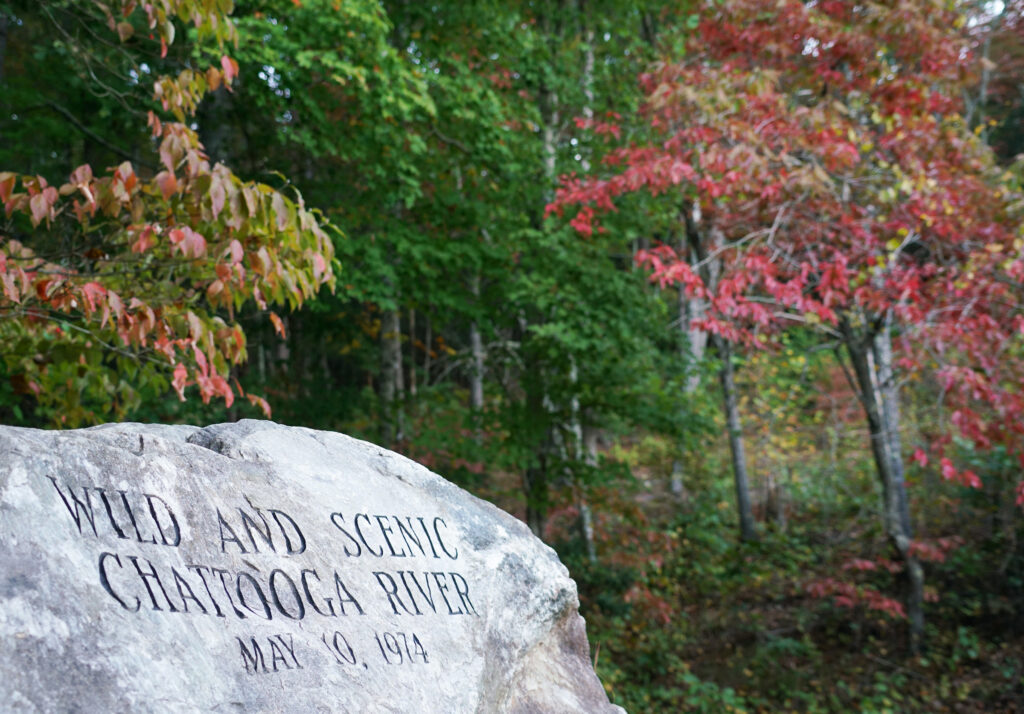
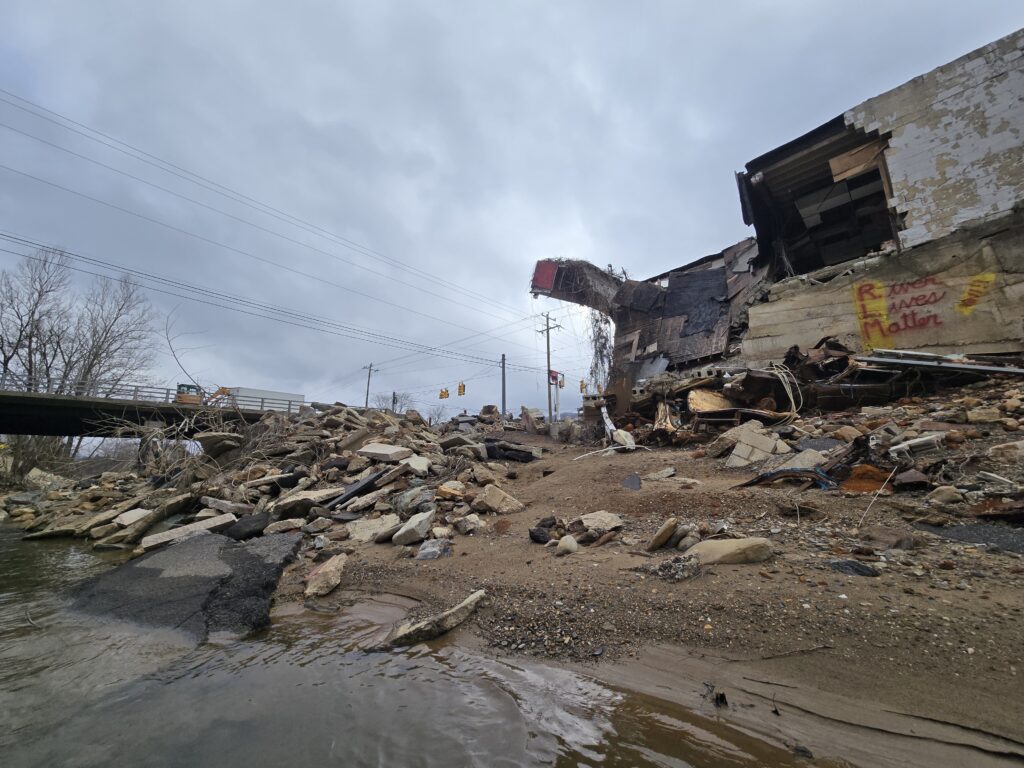

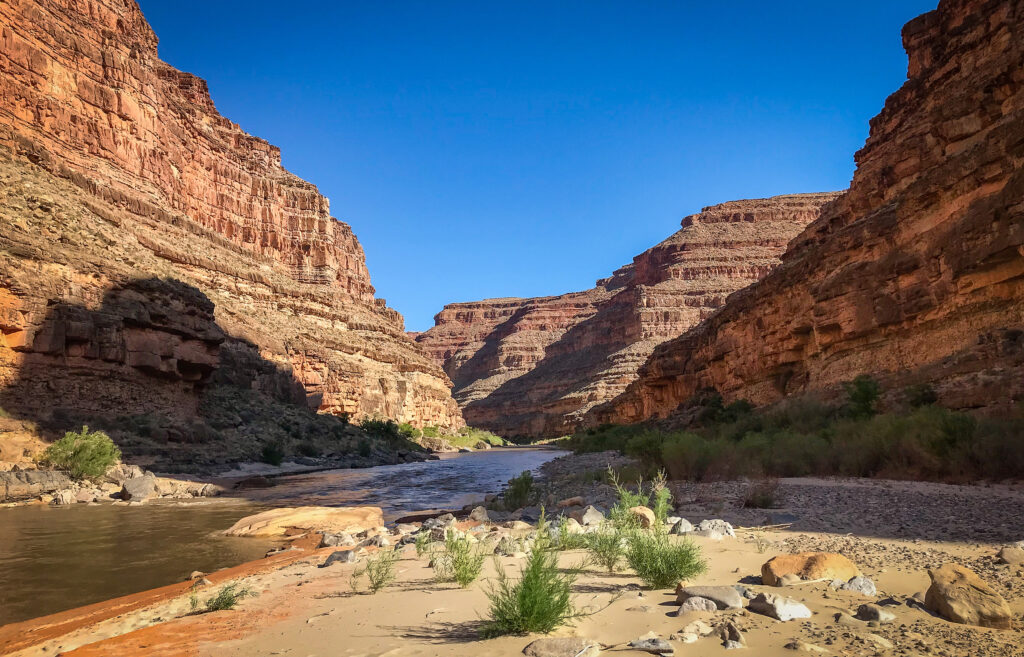
1 response to “Celebrating the Chattooga’s 50th Anniversary as a Wild and Scenic River”
Thank you for putting this together, I sent it to my e-mail possy for their awareness and they will appreciate it.